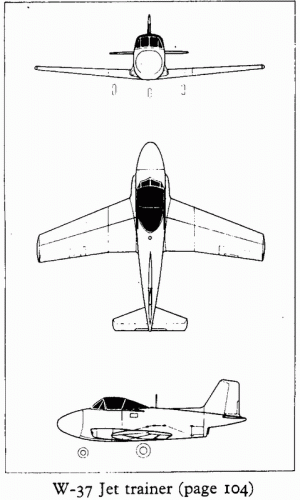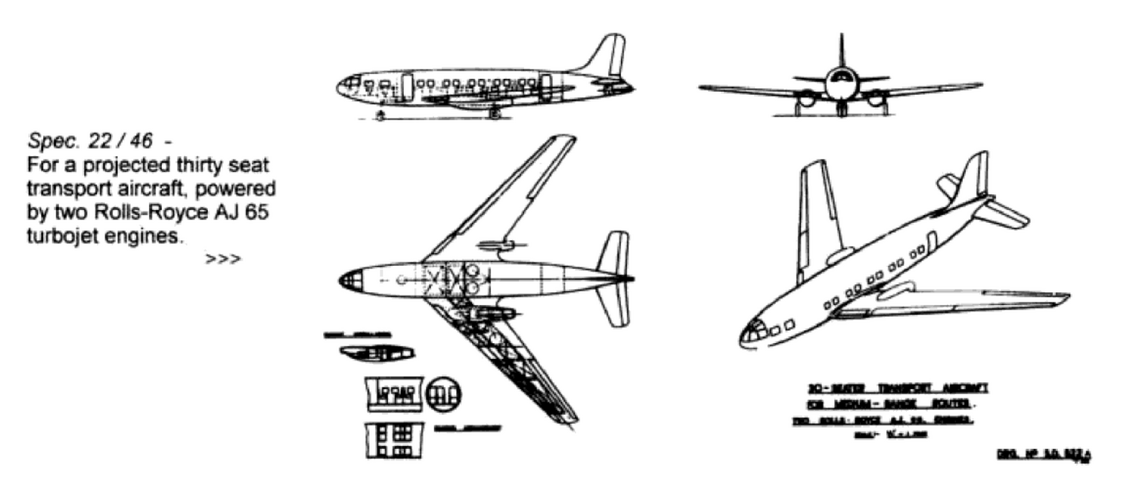- Joined
- 25 June 2009
- Messages
- 14,107
- Reaction score
- 4,239
Source: Westland 50 (Westland Aircraft Ltd./Ian Allan, 1965)While the main drawing office was busy on development of the Wyvern, the project office initiated a number of interesting studies.
One, designated W-37, was for a low-wing monoplane two-seat jet trainer. The idea was to introduce a programme of all-jet training, dispensing with the practice of giving ab initio training in piston-engined aircraft (this procedure was adopted later by the Royal Air Force, the first air force to do so, with the Jet Provost). >> see separate topic
Another project was for a small short-range airliner, about the size of the contemporary Miles Marathon but powered by two Rolls-Royce Dart turboprop engines.
Of great interest was the study for a four-engined turbojet airliner resembling, in its final form, a smaller version of the de Havilland Comet. During the development of this project, the company reached the stage of holding initial discussions with B.O.A.C.
A number of projects concerned possible successors to the Wyvern. One of these, a turbojet-powered tailless aircraft with a swept wing, was similar in concept to the D.H. 108 Swallow.
(...)
Another possibility was to continue the high-altitude fighter line, and produce a jet-powered successor to the Welkin, but here again no government contracts were forthcoming.
Yet another line to which Westland could have turned was the commercial market, as it had done nearly thirty years previously, in 1919. For a time, it looked as if the company might enter the light aircraft field, with a twin-engined executive type of aeroplane.
NOTE: Paragraph jumps and bold type are mine.



